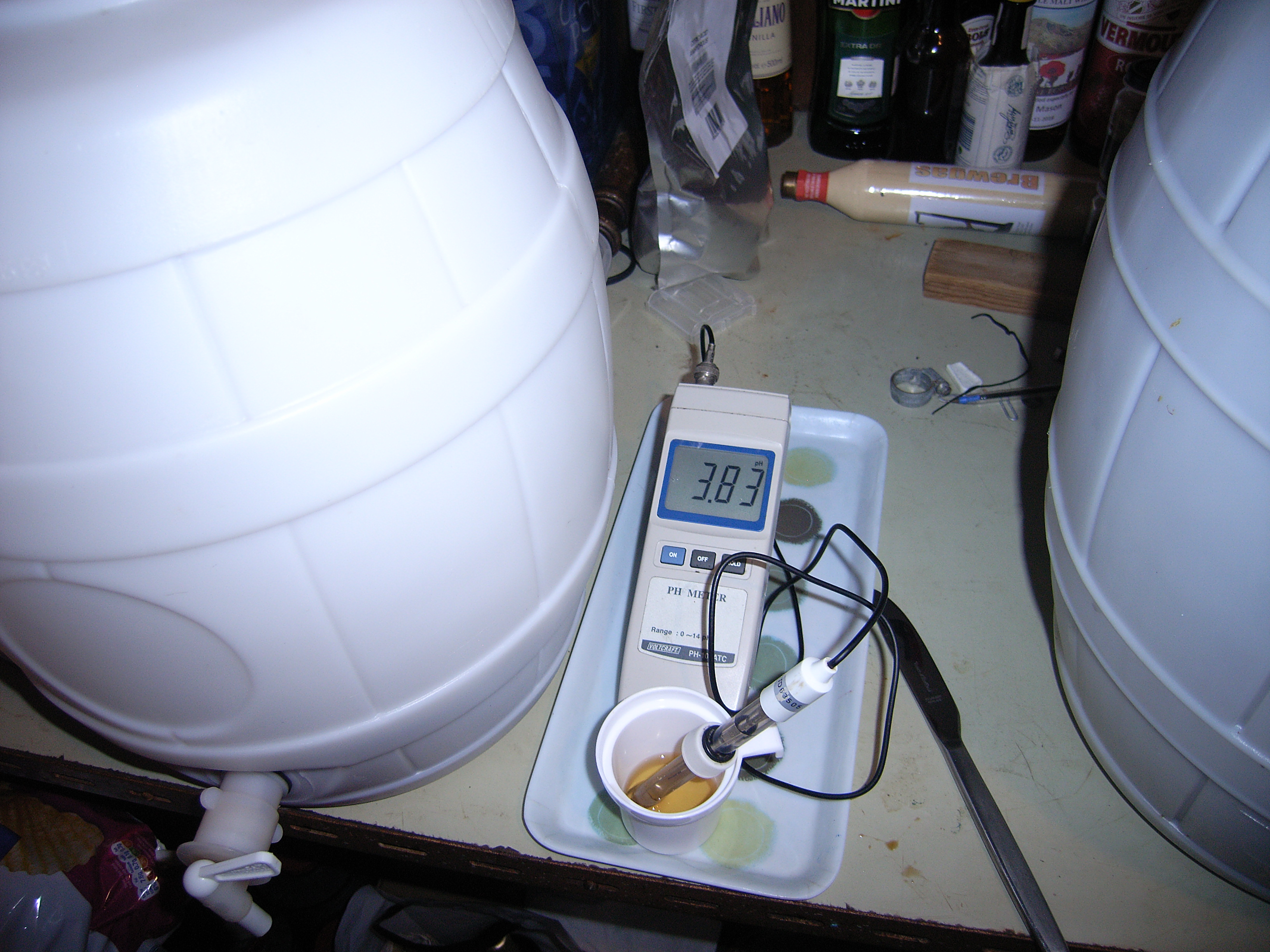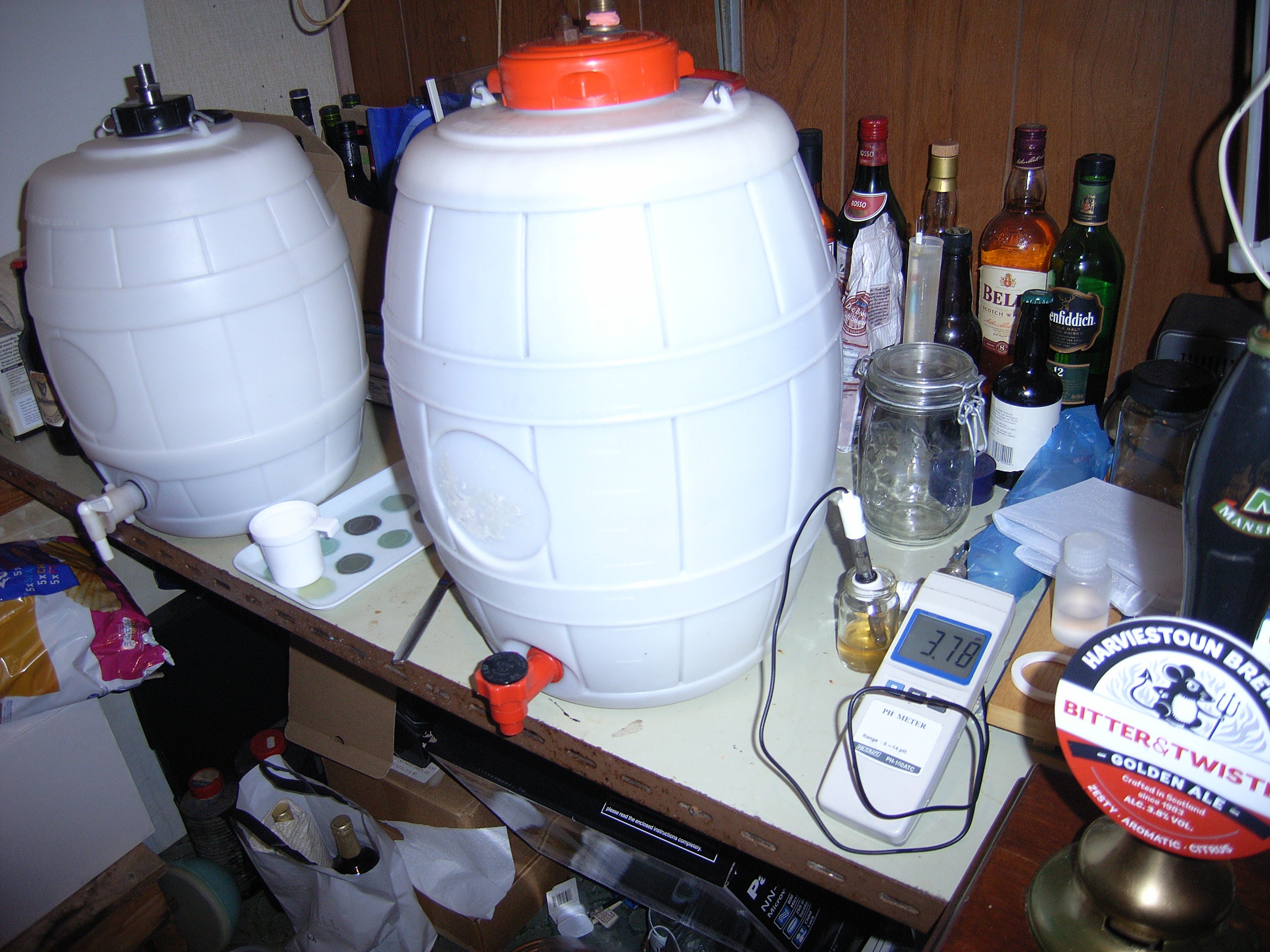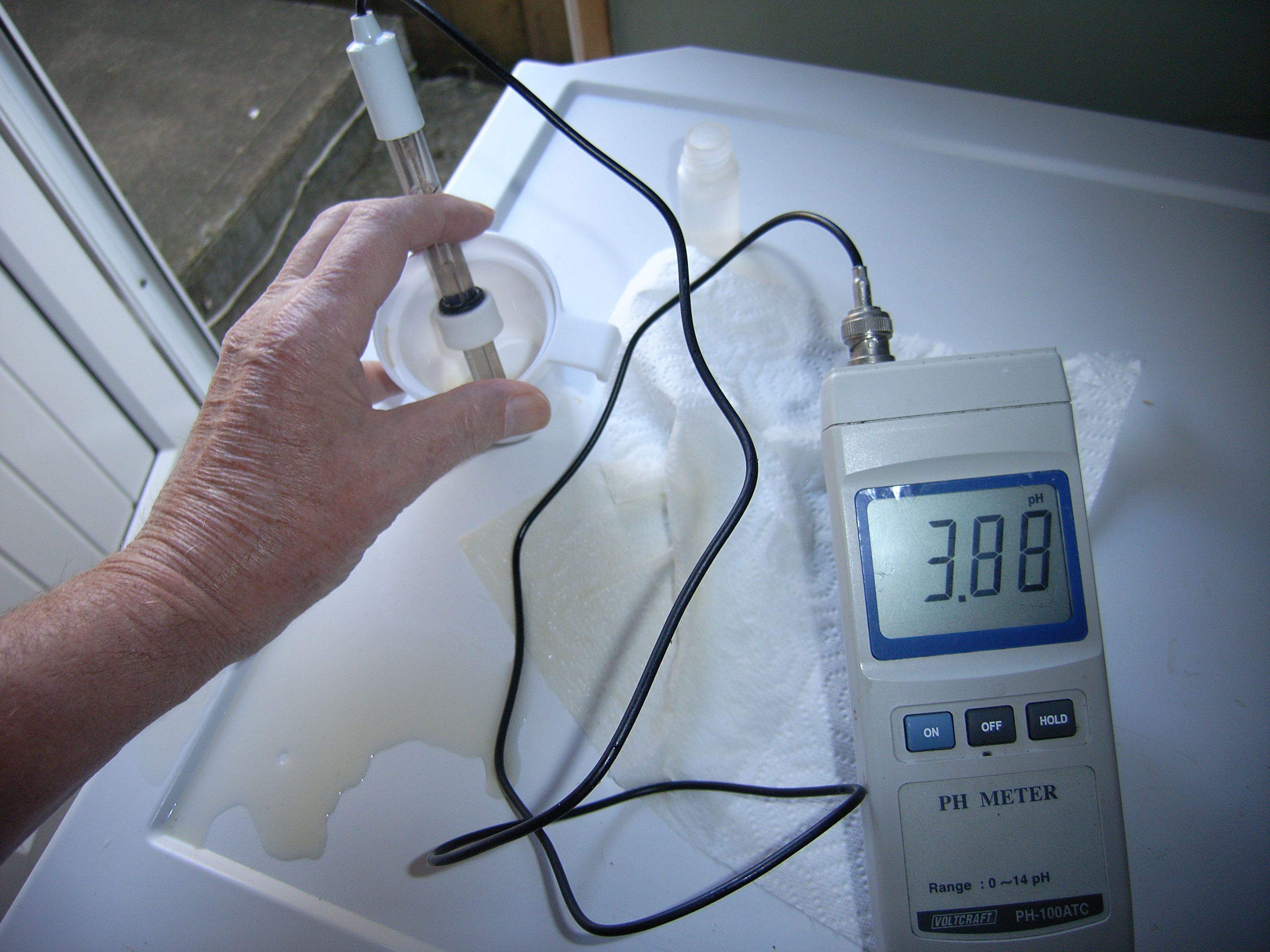Hello,
I'm asking what could be the causes and what can I do to fix my next batch?
My wee heavy finished fermentation at pH = 3.87. After the mash and sparge the pH was at 5.28. I added pickling lime to adjust the pH to 5.72 to start the boil, and got a pH = 5.52 after the 60 minute boil. Pitched a shaken not stirred starter of harvested Wyeast 1728, and after fermentation for 7 days at 55° and then 8 days at gradually up to 67° with apparent attenuation of about 88%, the pH was at 3.87. The wee heavy is ok but too acid-tasting for my preference. I can raise the pH a little with pickling lime in my keg, but haven't done it yet.
I have experienced similar after-fermentation below 4 pH values with amber ale using harvested Wyeast 1007 shaken not stirred starters, and decided to increase the pH before the boil in my wee heavy, but still got a low pH value after fermentation.
I did a search here to find answers, but couldn't find a post with a fermentation finishing with a too low pH. I just registered here after lurking for years, so that I could ask for your advice.
Thanks much!
Jeff
I'm asking what could be the causes and what can I do to fix my next batch?
My wee heavy finished fermentation at pH = 3.87. After the mash and sparge the pH was at 5.28. I added pickling lime to adjust the pH to 5.72 to start the boil, and got a pH = 5.52 after the 60 minute boil. Pitched a shaken not stirred starter of harvested Wyeast 1728, and after fermentation for 7 days at 55° and then 8 days at gradually up to 67° with apparent attenuation of about 88%, the pH was at 3.87. The wee heavy is ok but too acid-tasting for my preference. I can raise the pH a little with pickling lime in my keg, but haven't done it yet.
I have experienced similar after-fermentation below 4 pH values with amber ale using harvested Wyeast 1007 shaken not stirred starters, and decided to increase the pH before the boil in my wee heavy, but still got a low pH value after fermentation.
I did a search here to find answers, but couldn't find a post with a fermentation finishing with a too low pH. I just registered here after lurking for years, so that I could ask for your advice.
Thanks much!
Jeff























































![Craft A Brew - Safale BE-256 Yeast - Fermentis - Belgian Ale Dry Yeast - For Belgian & Strong Ales - Ingredients for Home Brewing - Beer Making Supplies - [3 Pack]](https://m.media-amazon.com/images/I/51bcKEwQmWL._SL500_.jpg)






